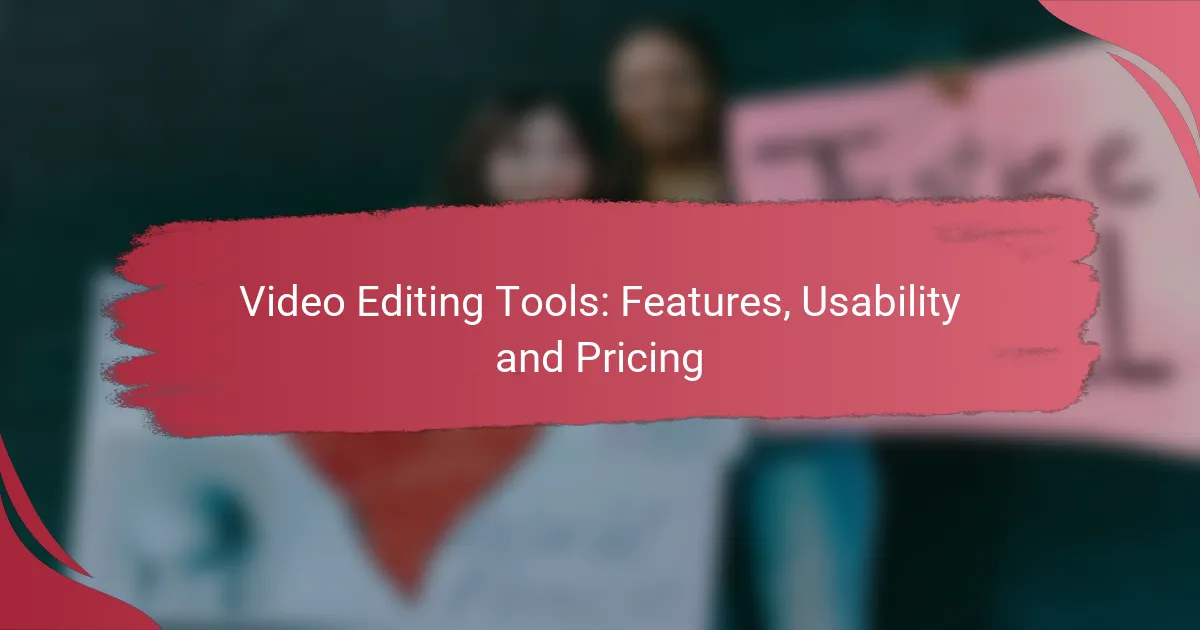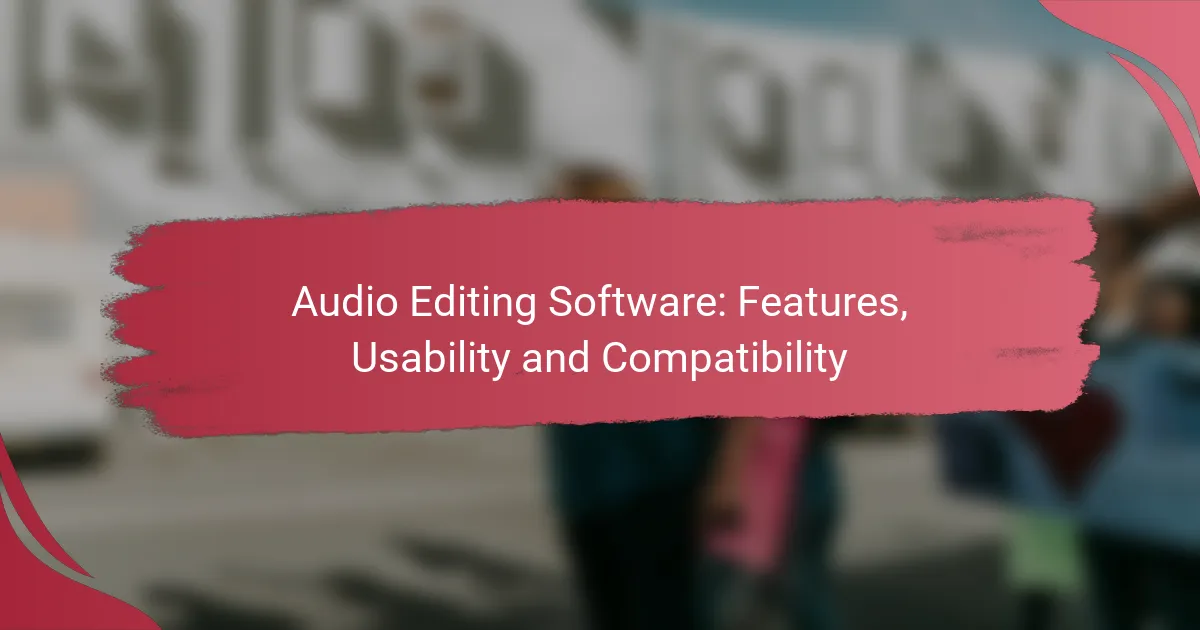Choosing the right video editing tool is crucial for both beginners and experienced editors, as it directly impacts the quality and ease of the editing process. With a variety of features available, such as multi-track editing and color correction, it’s important to find a tool that meets your specific needs while remaining user-friendly. Additionally, understanding the different pricing models—ranging from subscriptions to one-time purchases—can help you select an option that fits your budget and editing style.
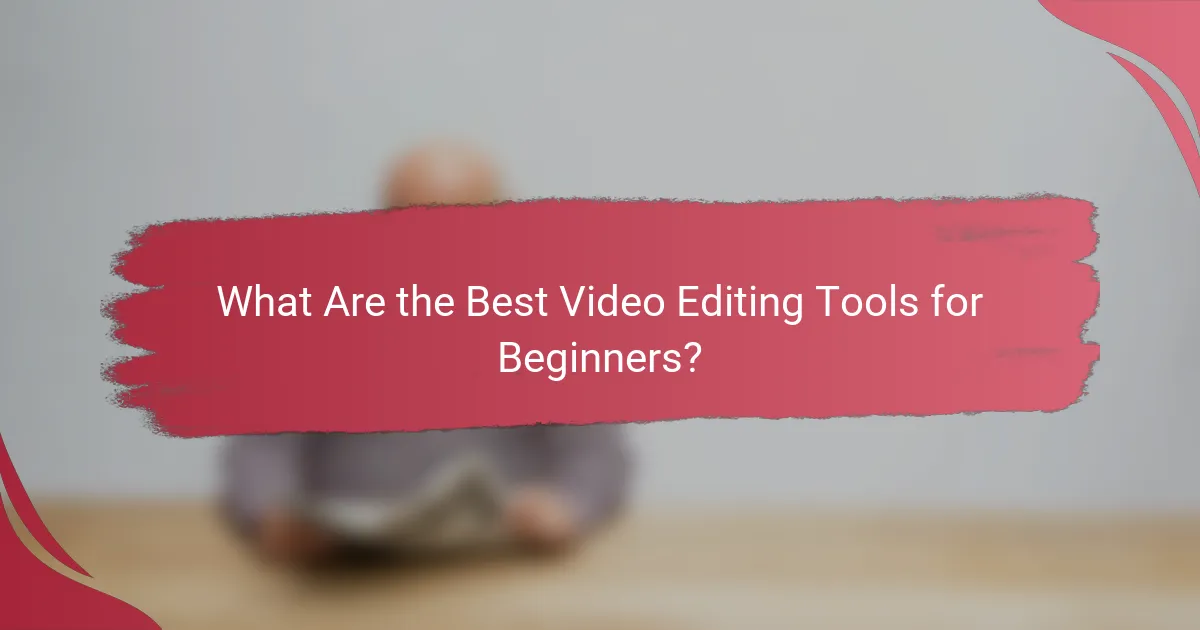
What Are the Best Video Editing Tools for Beginners?
The best video editing tools for beginners are user-friendly, offer essential features, and are often budget-friendly. These tools help new editors create quality videos without overwhelming them with complex functionalities.
Adobe Premiere Rush
Adobe Premiere Rush is designed for users who want a straightforward editing experience across devices. It provides a simplified interface with drag-and-drop functionality, making it easy to add clips, transitions, and effects.
This tool includes built-in templates and social media export options, which are ideal for beginners looking to share content online. Subscription plans start at around $9.99 per month, making it accessible for casual users.
iMovie
iMovie is a free video editing software available exclusively for macOS and iOS users. It offers a clean interface and essential features like trimming, transitions, and audio editing, making it perfect for beginners.
With iMovie, users can easily create trailers and movies with pre-set themes. Its seamless integration with Apple devices enhances usability, allowing for quick edits on the go.
Filmora
Filmora is a versatile video editing tool that balances simplicity and advanced features. It offers a wide range of effects, transitions, and audio options, catering to both novice and intermediate editors.
Pricing starts at approximately $39.99 per year, and it includes a free trial version. Users appreciate its intuitive interface, but they should be aware that the free version adds a watermark to exported videos.
HitFilm Express
HitFilm Express is a free video editing software that also includes visual effects capabilities, making it suitable for beginners interested in more than just basic editing. It features a customizable interface and a variety of tutorials to help new users get started.
While it’s free, users can purchase add-ons for advanced features. This tool is great for those who want to explore creative possibilities without a financial commitment initially.
DaVinci Resolve
DaVinci Resolve is a powerful video editing tool that offers a free version with professional-grade features. It combines editing, color correction, and audio post-production in one application, making it a comprehensive choice for beginners willing to learn.
The learning curve can be steeper than other beginner tools, but numerous online resources are available. Users should consider investing time in tutorials to fully utilize its capabilities, especially if they plan to progress in video editing.
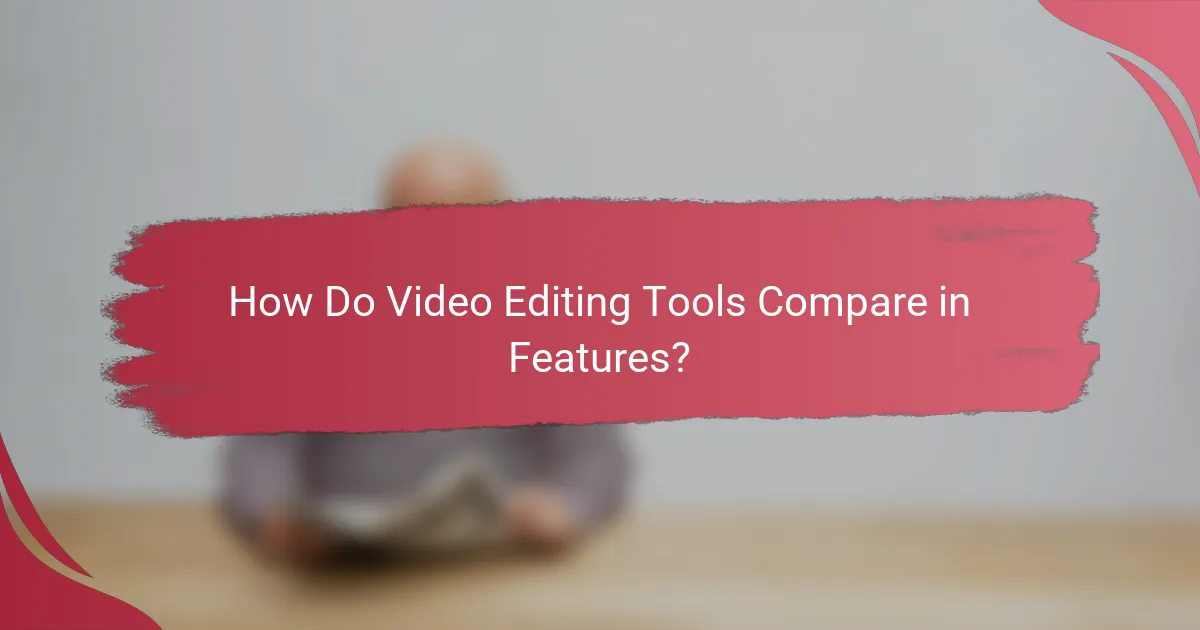
How Do Video Editing Tools Compare in Features?
Video editing tools vary significantly in features, impacting usability and the overall editing experience. Key features to consider include multi-track editing, color correction capabilities, audio editing features, and export formats, each contributing to the tool’s effectiveness for different projects.
Multi-track editing
Multi-track editing allows users to layer multiple video and audio tracks, enabling complex edits and creative storytelling. This feature is essential for projects that require synchronization of various media elements, such as voiceovers, background music, and visual effects.
When choosing a video editing tool, look for options that support a sufficient number of tracks based on your project needs. Tools that offer at least 5 to 10 tracks are generally suitable for most amateur and semi-professional projects.
Color correction capabilities
Color correction is crucial for achieving a polished look in video projects. Advanced tools provide features like color grading, white balance adjustments, and LUT (Look-Up Table) support, allowing for precise color manipulation.
Consider tools that offer intuitive color correction interfaces and presets for quick adjustments. A good video editor should allow you to correct colors in a few clicks while also providing advanced options for detailed work.
Audio editing features
Effective audio editing features enhance the overall quality of your video. Look for tools that include noise reduction, audio mixing, and equalization options to ensure clear sound and balanced audio levels.
Many video editing software options now come with built-in audio editing capabilities, which can save time. However, if you require advanced audio manipulation, consider integrating dedicated audio software into your workflow.
Export formats
Export formats determine how your final video can be shared or published. Most video editing tools support common formats like MP4, AVI, and MOV, which are widely compatible across platforms.
When selecting a video editor, ensure it offers a range of export options suitable for your needs, including resolutions and codecs. For online platforms, MP4 is often the preferred choice due to its balance of quality and file size.
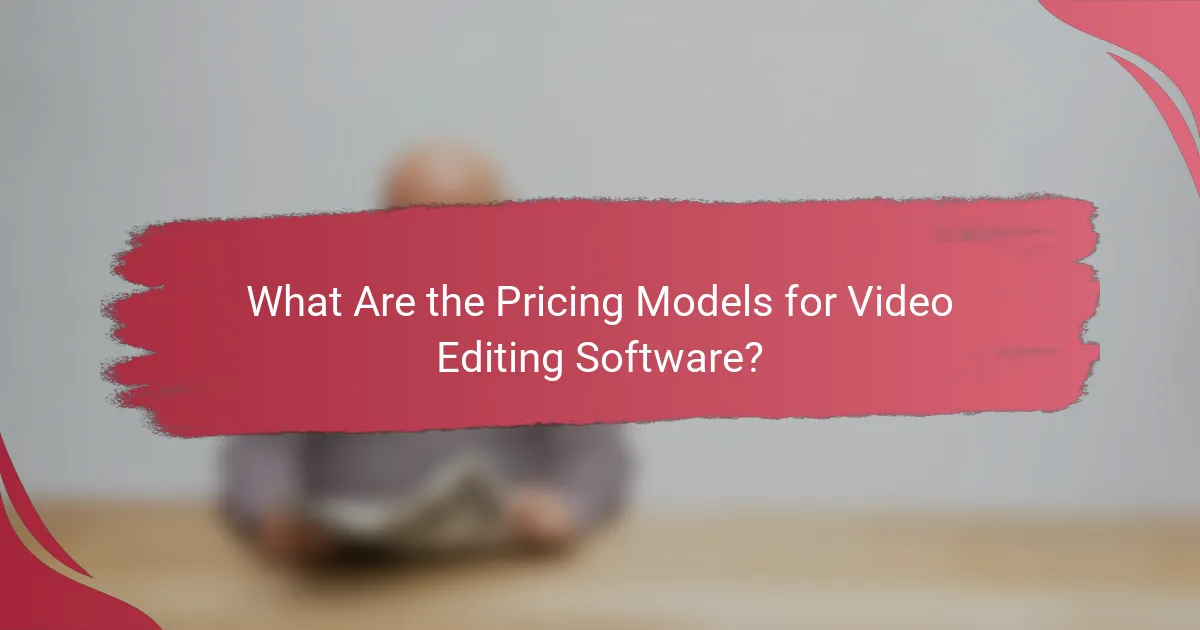
What Are the Pricing Models for Video Editing Software?
Video editing software typically offers several pricing models, including subscription-based plans, one-time purchases, and free versions or trials. Each model has its own advantages and considerations, making it essential to choose one that aligns with your editing needs and budget.
Subscription-based pricing
Subscription-based pricing is a popular model where users pay a recurring fee, usually monthly or annually, to access the software. This model often includes regular updates, new features, and customer support. For example, Adobe Premiere Pro offers a subscription plan starting around $20 per month, making it accessible for both amateurs and professionals.
One key consideration with subscriptions is the long-term cost; over several years, it can add up significantly compared to a one-time purchase. However, the flexibility of canceling at any time can be appealing for users who may not need the software year-round.
One-time purchase
One-time purchase models require users to pay a single upfront fee for perpetual access to the software. This can range from a few hundred to over a thousand dollars, depending on the software’s capabilities. For instance, Final Cut Pro X is available for a one-time fee of around $300.
While this model can be more economical in the long run, users may miss out on ongoing updates and support unless they pay for upgrades. It’s crucial to evaluate whether the software will meet your needs over time without frequent updates.
Free versions and trials
Many video editing tools offer free versions or trial periods, allowing users to test the software before committing financially. Free versions often come with limited features or watermarked exports, while trials typically provide full access for a limited time, such as 7 to 30 days.
Using free versions or trials can help you assess whether the software meets your needs without any financial risk. However, be mindful of the limitations, as they may not reflect the software’s full potential. Always check the terms to understand what features are available and any restrictions on usage.
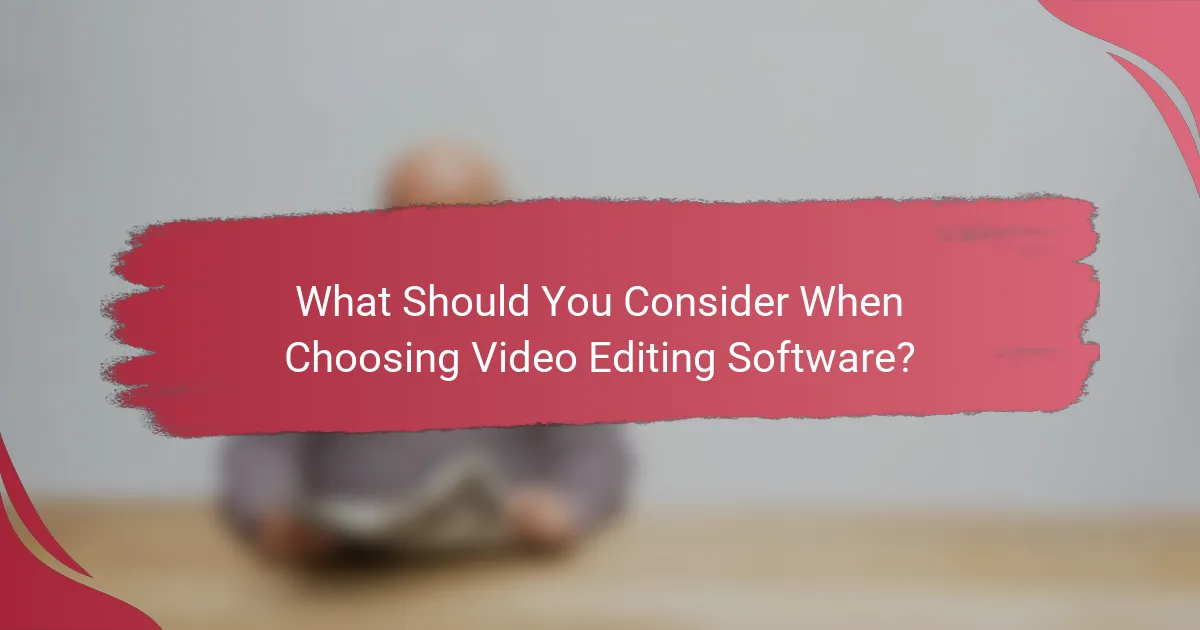
What Should You Consider When Choosing Video Editing Software?
When selecting video editing software, consider factors like usability, system compatibility, and customer support. These elements significantly impact your editing experience and efficiency, ensuring you choose a tool that meets your specific needs.
User interface and usability
The user interface (UI) and overall usability of video editing software are crucial for a smooth editing process. Look for intuitive layouts that allow you to navigate easily between features without confusion. A clean, organized workspace can enhance your productivity and reduce the learning curve.
Consider trying out free trials to assess how comfortable you feel with the software. Tools with drag-and-drop functionality and customizable workspaces often provide a better user experience. Avoid overly complex programs if you are a beginner; simpler options can still offer robust features.
System compatibility
Ensure that the video editing software is compatible with your operating system, whether it’s Windows, macOS, or Linux. Some applications may require specific hardware specifications, such as a certain amount of RAM or a dedicated graphics card, to function optimally.
Check for compatibility with various video formats and codecs as well. Software that supports a wide range of file types will give you more flexibility in your projects. If you plan to collaborate with others, consider tools that work across different platforms to facilitate easier sharing and editing.
Customer support options
Reliable customer support is essential when using video editing software, especially if you encounter technical issues. Look for providers that offer multiple support channels, such as live chat, email, and phone assistance. Comprehensive online resources, including tutorials and forums, can also be beneficial.
Evaluate the availability of support during your working hours. Some companies provide 24/7 support, while others may have limited hours. Reading user reviews can give you insights into the quality of customer service and responsiveness, helping you make a more informed decision.
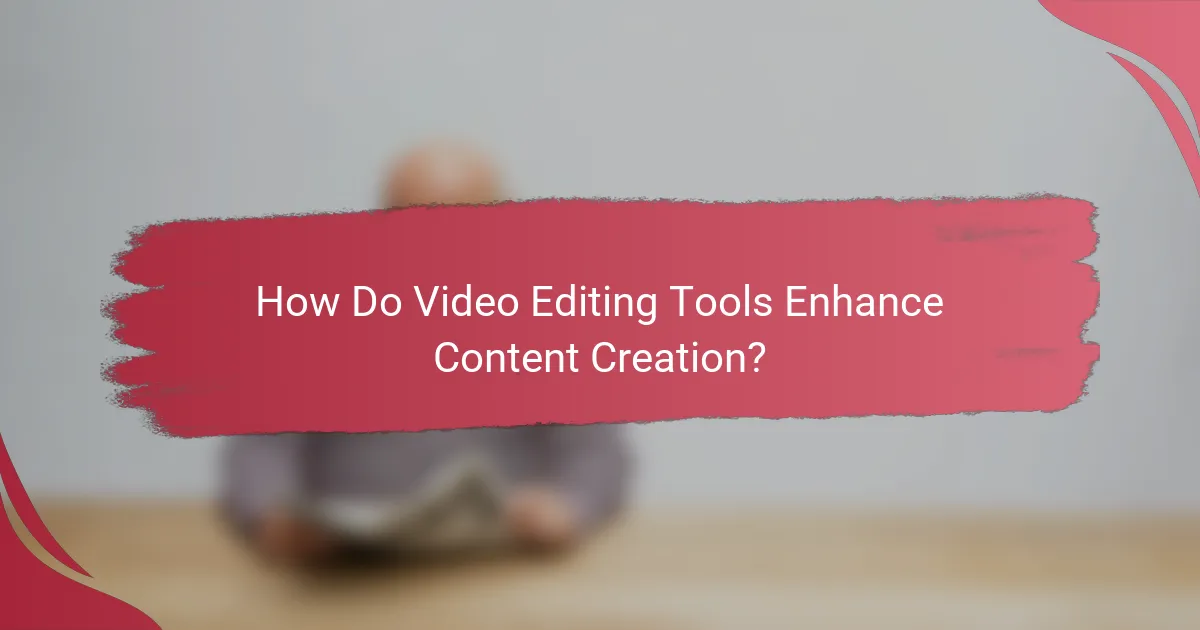
How Do Video Editing Tools Enhance Content Creation?
Video editing tools enhance content creation by providing features that streamline the editing process, improve visual storytelling, and enable creators to engage their audience effectively. These tools offer a range of functionalities, from basic cuts to advanced effects, allowing for professional-quality videos that resonate with viewers.
Improved storytelling
Video editing tools allow creators to craft compelling narratives by combining visuals, audio, and effects seamlessly. Features like transitions, overlays, and text animations help convey emotions and messages more effectively, enhancing the overall story. For instance, using slow-motion effects during key moments can heighten drama and impact.
When editing, consider the pacing and flow of your story. Aim for a balance between action and quieter moments to maintain viewer interest. Tools that offer timeline editing can help visualize this flow, making it easier to adjust scenes for optimal storytelling.
Increased viewer engagement
Engaging videos capture and retain viewer attention, and editing tools play a crucial role in achieving this. By incorporating elements like dynamic cuts, engaging graphics, and sound effects, creators can make their content more appealing. For example, adding background music or sound bites can enhance emotional resonance and keep viewers hooked.
To boost engagement, focus on the first few seconds of your video. Use eye-catching visuals or intriguing questions to draw viewers in quickly. Regularly analyze viewer retention metrics to understand what keeps your audience watching and adjust your editing style accordingly.
Brand consistency
Maintaining brand consistency in video content is essential for recognition and trust. Video editing tools enable creators to apply consistent color grading, fonts, and logos across all videos. This uniformity helps reinforce brand identity and makes content easily identifiable to viewers.
When editing, establish a style guide that outlines your brand’s visual elements. Use templates for intros and outros to ensure every video aligns with your brand’s aesthetic. Regularly review your content to ensure adherence to these standards, which can significantly enhance brand loyalty over time.
